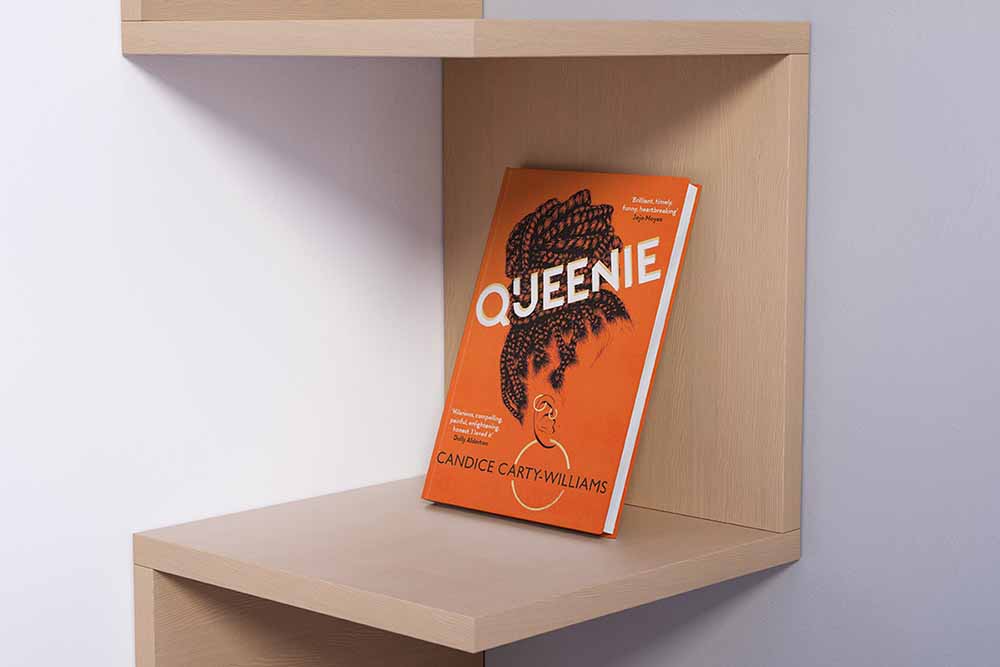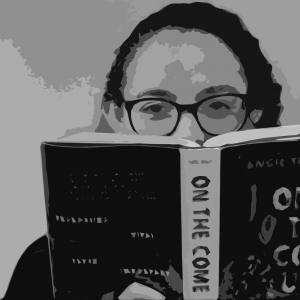By: Candice Carty-Williams
Ha! On the front cover there is a review that says that Queenie is Americanah meets Bridget Jones Diary, and I am just not sure of that at all! It felt more like Fleabag with a black protagonist. It was, in some ways, very funny.
Queenie is 25 when the book begins. She is with a man who we never truly get to meet, but who seems like he was equally loving and toxic throughout their relationship. At the beginning of the book, Queenie and Tom have agreed to take a 3 month break. It turns out though, that Tom never really intended for the two to rekindle any form of relationship. We also learn pretty upfront, that Queenie has recently had a miscarriage without realizing that she was pregnant.
She quickly spirals down, down, down. Her life crumbles out of her control. She seeks relationships with men who end up abusing and fettishizing her and leave her more broken than they found her.
I wanted Queenie to pull it together, and to me, it seemed unbelievable that someone could let their life spin out of control over a break up…… but then…
Queenie hits her breaking point, when one of her best friends dumps her because it turns out they were sleeping with the same man without either of the women realizing it (the man realized it. He was supposed to be dating her friend, while he was sleeping with Queenie). She is also is suspended from her job while a sexual assault case is pending, despite the fact that she has been majorly used by every man that she encounters since Tom. And she then becomes the first person in her family to begin therapy – we learn (we’ve been learning throughout) that there is significantly more going on than her break up.
PROS: I like that Queenie did not end up with a man. In fact, the ending was a celebration of Queenie surviving one of the hardest years of her life. She is surrounded by the people who love her: her friends, her family, her cousin. She receives a MUCH deserved apology from one friend, and she comes to terms, finally, that she and Tom are forealsies done.
Parts of it were funny, and some parts were really hard for me to buy. Some parts were really not funny though.
CONCERNS: The author did not do enough to talk about many of the problematic themes that resurfaced throughout the whole book. Of special note, at one point Queenie is asked why she doesn’t date black men (this, after being abused and fetishized repeatedly by white men) and she responds that she is anxious around black men and never thinks she is enough for them. This, even after white men are consistently brutal to her. There are a couple reasons this could be that I can gather directly from the book: 1. Her abusive step-father who often verbally told her that she is not enough; and 2. the amount of experience she’s had with peers telling her that she is not black enough, or that she is white on the inside. But the author does not ever explicitly connect these dots, and I absolutely think that she should. That is a big concept to drop without further exploration.
Most of the characters were pretty flat, and after about 20 pages I felt like I could have probably filled in the blanks. After reading a text message from Darcy assuring that Queenie and Tom would end up together because they love each other!, I thought, “Oh, so Darcy is going to be that friend.” And to some degree or another I had that same feeling with most of the main characters.
In many ways, Queenie is a stereotypical snapshot of many of the characters/situations, without digging deeper to explore the themes/situations. That being said, I laughed, and cried, and tried to be as forgiving as possible to a character who wasn’t always relatable.


